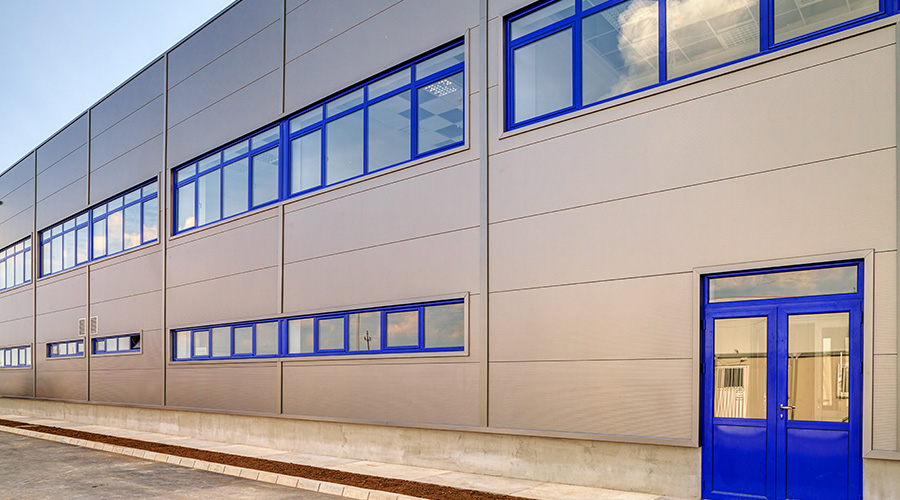4 Keys to Successful Painting Projects
Preparation, product, application and budget all factor into managers’ decisions
In theory, it was supposed be a straightforward painting project. In practice, it was not.
An upgrade of a school district’s administrative offices included a painted accent wall in one of the school's colors. But after the paint had dried, it did not match the school’s color and looked more like the shade of a nearby district. So it was back to a review of paint swatches to determine the correct shade before repainting the wall.
Although not exorbitant in cost and somewhat minor in scope, the do-over required the purchase of new paint and application equipment, extra hours of labor and delayed completion of the upgrade.
Color matching is one of several challenges maintenance and engineering managers face during painting and coating applications at commercial and institutional facilities. And, those challenges and problems often are intertwined.
Preparing surfaces
Correctly preparing interior and exterior surfaces determines the quality of a paint application. Improper preparation is a significant mistake that painting crews can make.
“Preparation is the No. 1 key to success in paint and coatings,” says Jake Boyer, vice president of sales for Prosoco. “A perfect paint job can be ruined with improper prep, while preparation can help make inferior coatings look good and outlive their intended lifespan.”
Identifying the substrate, removing existing coatings, cleaning the substrate using the correct cleaning materials and working in favorable weather conditions on exterior projects are some of the suggested steps to follow in preparing a surface for coverage.
Building in enough time for the project to be carried out is another factor managers need to consider.
“Oftentimes, there is a short period of time to paint areas of a facility, which can make it difficult to prep the substrates properly,” says Dennis Fiorilli, director of product excellence for Sherwin-Williams. “Even if the correct products are used, there is the potential for issues later on if the substrate was not in the right condition for the coating.”
Product selection
Along with preparation, managers need to recognize the parameters of a painting project to help ensure they choose the appropriate materials to match the job.
“It’s important to understand the project requirements before starting a painting job,” says Ed Edrosa, senior product manager for Behr. “There are many factors when choosing the right paint for a project, including the application site, condition of the substrate, type of existing coating, desired effect and budget.”
Boyer agrees: “Ensure that the paint you select is intended for the specific substrate and provides the performance you desire. Whenever you’re painting masonry, you should always use a breathable coating that is intended for application to masonry.”
Some paint and coating manufacturers offer a variety of resources to assist managers with product selection. These resources include field teams of representatives, store managers and account managers who can tour and evaluate facilities and job sites and offer recommendations for paint and coating preparation and finishing options.
Application irritation
Inadequate preparation and use of incorrect materials can result in application issues that create extra work for managers and crews. Some of those issues might be minimal, while others might be time-consuming, expensive and labor-intensive.
Overspray is a major application issue that can also be attributed to, for example, “improper or inadequate masking, wind drift or spray patterns,” Boyer says.
“That results in overspray in areas it shouldn’t be that later must be removed for proper aesthetics,” he says. “I also see improper applications – appropriate mil thickness, color matching, application during temperatures outside of the recommended range and application prior to a weather event resulting in the paint washing off before it has a chance to cure.”
Other interior and exterior painting problems managers might encounter include: peeling; cracking; rust bleed; flashing, or an uneven appearance in the paint’s sheen; surfactant leaching, or unsightly paint streaks; and poor hide, or insufficient coverage.
Setting a budget
Fiorelli says managers to consider these questions when determining the costs for painting and coating projects:
- What preparation is needed?
- What are the expectations of the coating? How long does it need to last?
- Is there a repaint schedule?
- Who is going to apply the paint: in-house workers or an outside contractor?
- What is the timeframe to complete the project?
If a contractor is hired for the project, managers should follow an approach similar to identifying and selecting the appropriate materials.
“It is important to choose a contractor that has experience with your specific project type and a vast portfolio of various properties showcasing their expertise,” Edrosa says.
Boyer says managers need to set their project budgets with the idea that paying more now generally means paying less later.
“Don’t go cheap,” he says. “Select the appropriate product the first time, and you won’t be left paying for issues down the road that far eclipse any upfront savings.”
Related Topics:












